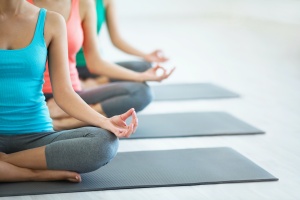
A few summers ago, I suffered from terrible anxiety. To cope, I’d often sit outside under the trees noticing the light pouring through the branches and listening to the sound of my breath mingling with the tune of fluttering leaves. It would bring me tranquility and it was time just for me. I had faith in this practice to restore me, if I gave the trees my full attention. Yoga requires a similar faith. If we practice with sincere effort, equanimity and trust, over time the process of yoga will bring us back to ourselves. And like the shelter of the trees, one pose can also be a place of refuge. The āsanas are not simply things we do. They are places we go.
The current global health crisis is a moment of emotional, physical, and spiritual depletion. We may not have the time or energy for lengthy āsana practices or extended meditations right now. But if we’re tired and anxious there are simple, time-efficient ways to restore with yoga.
Reclining Bound Angle Pose (Supta Baddha Koṇāsana), accompanied by breath-work and focused awareness, can be a complete practice for deep relaxation. Do the best you can to find a quiet space to do this exercise. If it feels impossible to calm down, don’t be dissuaded. Regardless of how long you have available to rest in this posture, it will benefit your mind and body. Proceed without attachment to the outcomes, but with willingness and curiosity.
Step 1: Reclining Bound Angle Pose (Supta Baddha Koṇāsana)
Start in Corpse Pose (Śavāsana) and take a few breaths there. With each exhale loosen the muscles of your back, melting into the support of the floor. Bring the soles of your feet together at a comfortable distance from your pelvis, opening your knees wide. Place a block, cushion or rolled up towel under each knee. Allow these supports to bear the full weight of your legs, facilitating a release in your hips. Draw your tailbone down the mat, rolling your pelvis up towards your navel, creating space in your lower back. Tuck the chin slightly to lengthen the back of your neck and adjust as needed to ensure your spine is not compressed. Lay your head on a pillow and drape a blanket over your body. Close your eyes or soften your gaze, relax the muscles of your face, and position the hands in any way that feels best to you. Breathe naturally for several minutes. Remain in this posture for the duration of the practice, or for as long as it feels comfortable.
Step 2: Three Part Breath (Dīrgha Pranāyāma)
Place one hand on your abdomen and the other on your heart. Prop up your elbows with rolled towels if desired. Inhale from the space below your navel and send the breath seamlessly through your rib cage, extending the sides of your body, and then up into your chest until your lungs are full. Draw your shoulders towards the mat as your heart space opens. Exhale completely and with control. Allow your chest to fall, your ribs to reform and your navel to gently drop back towards the spine. With each breath cycle use the placement of your hands to feel the breath dance in your body.
Step 3: Withdraw the Senses (Pratyāhāra)
Disengage your senses from the world beyond your mat. Focus on your inward experience, rather than ambient noise, anxious thoughts, or unrelenting laundry lists. When your mind starts to wander, refocus on your breathing. If the thoughts persist, don’t be discouraged. Use your breath awareness as a shield from material distractions, as well as a guide for exploring the stillness and stability of your inner self. Pay attention to your breathing, but abandon all effort in your body. Be at ease in the unknown, the mystery of the self, an uncharted holy place.
May this practice bring you solace and peace, quell worry and fear, and serve as a place of refuge protected by the unassuming presence of your own breath. May it reveal the subtle complexities of your body, the transformative power of the āsanas, and the grace of praṇa. Above all, may it revitalize your spirit in times of great uncertainty.


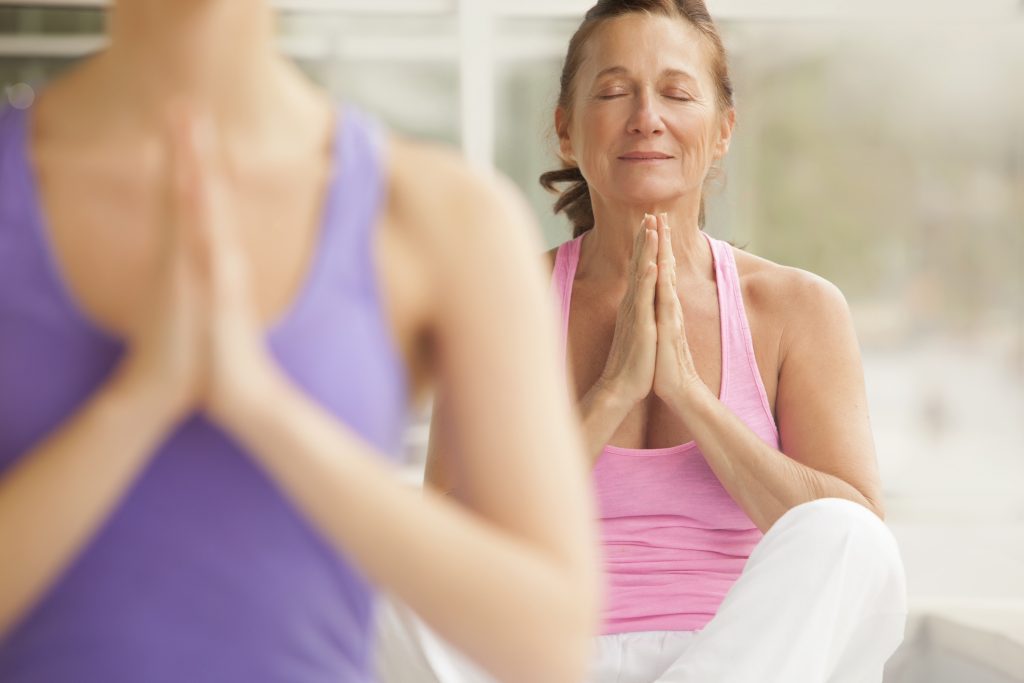

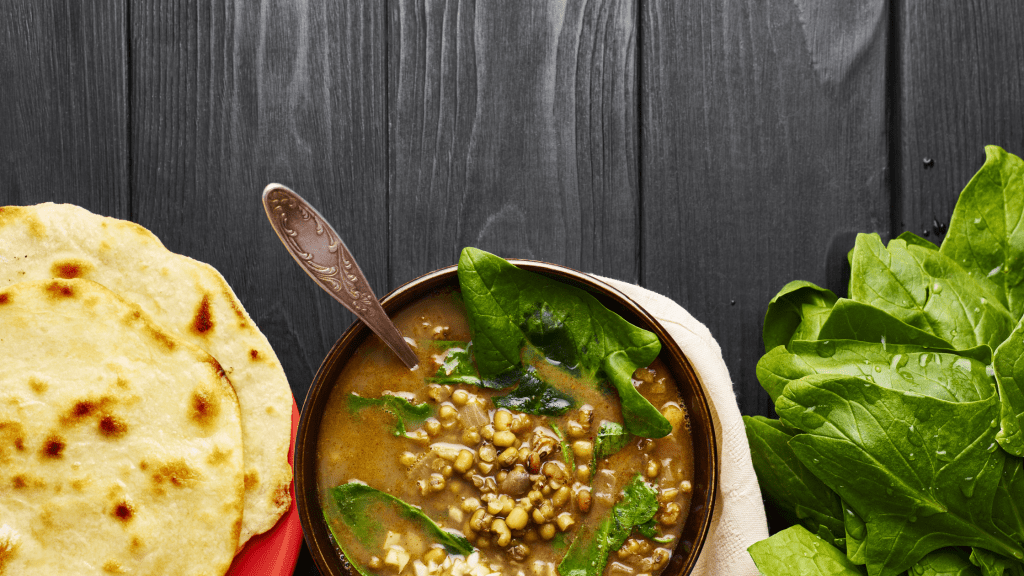
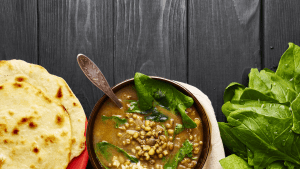
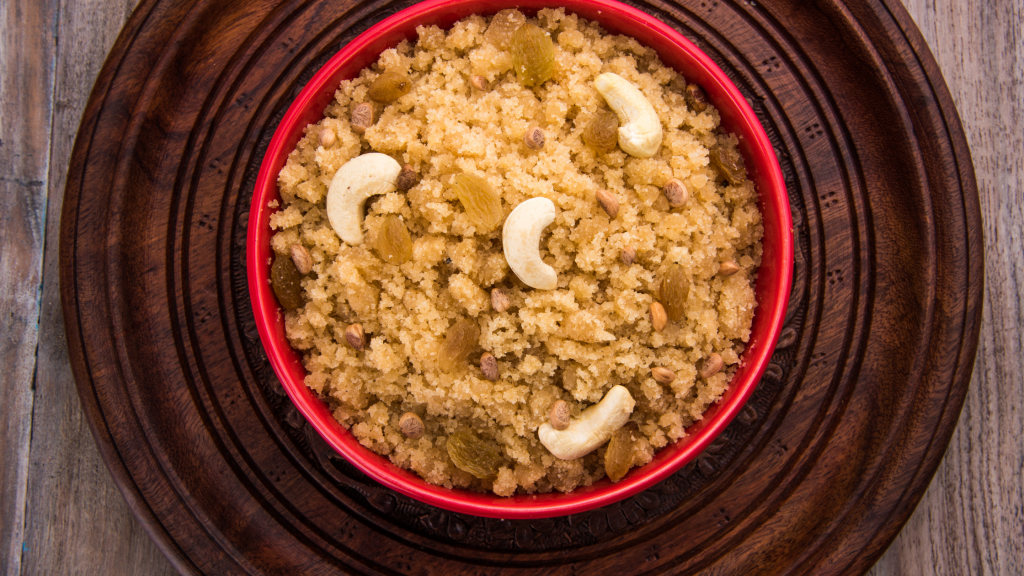
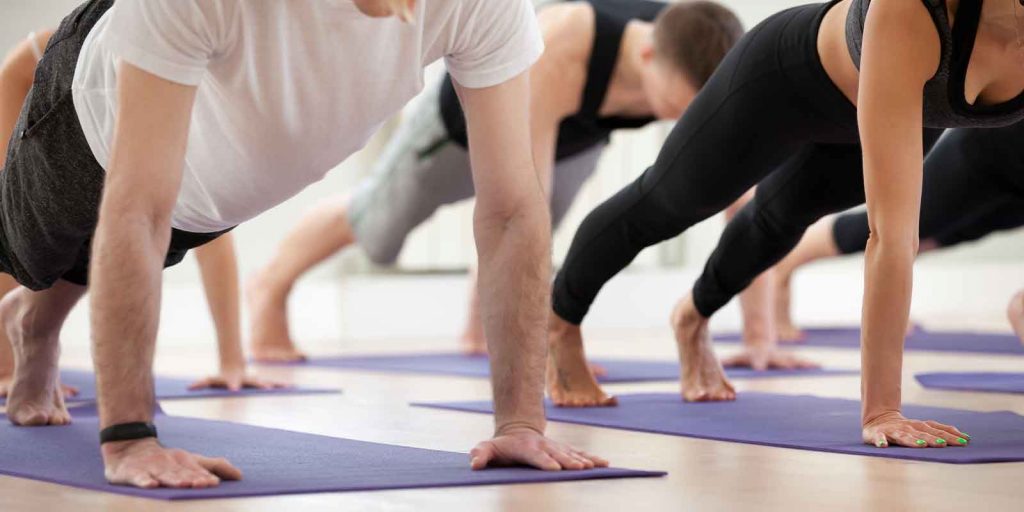
 Chaturanga begins in plank pose. However, you can train your body and mind to shift into Chaturanga from plank simply by moving forward about one inch. Your wrists should be directly under your shoulders while in plank, but prep for Chaturanga requires you to be slightly forward.
Chaturanga begins in plank pose. However, you can train your body and mind to shift into Chaturanga from plank simply by moving forward about one inch. Your wrists should be directly under your shoulders while in plank, but prep for Chaturanga requires you to be slightly forward. Linking breath with movement is one definition of yoga. It’s not just “movement.” If you’re not practicing the breathing half of things, you’re only doing half of yoga.
Linking breath with movement is one definition of yoga. It’s not just “movement.” If you’re not practicing the breathing half of things, you’re only doing half of yoga. Think of verbal cues as a practice of connecting with people through language. Our words will likely fall flat from time to time, but we’ll always have the opportunity to try again. If a cue results in confusion or students move in a way we didn’t intend, that’s helpful information. In that situation, try a different approach instead of moving on. Self-correcting in the moment reveals our leadership and care. Our students’ responses to our cues are feedback on the cue itself and are not judgements on our value as yoga teachers. Here are some tips for improving our communication skills in class:
Think of verbal cues as a practice of connecting with people through language. Our words will likely fall flat from time to time, but we’ll always have the opportunity to try again. If a cue results in confusion or students move in a way we didn’t intend, that’s helpful information. In that situation, try a different approach instead of moving on. Self-correcting in the moment reveals our leadership and care. Our students’ responses to our cues are feedback on the cue itself and are not judgements on our value as yoga teachers. Here are some tips for improving our communication skills in class: When it comes to verbal cues, less is more. We don’t want to muddy our key message with a lot of words and it’s important to give our students time in the poses without us talking so they can turn inward and listen to whatever surfaces. Keep it clear and concise, and allow the combination of breath and asana to work its magic.
When it comes to verbal cues, less is more. We don’t want to muddy our key message with a lot of words and it’s important to give our students time in the poses without us talking so they can turn inward and listen to whatever surfaces. Keep it clear and concise, and allow the combination of breath and asana to work its magic. Yoga happens to be an activity that actually has all many
Yoga happens to be an activity that actually has all many  “We’ve seen a significant uptick in referrals from psychologists, especially for patients with anxiety,” says Steve Hickman, PsyD, executive director of the University of California San Diego Center for Mindfulness, where health care practitioners — including psychologists — conduct mindfulness research and offer classes for patients. “Therapists and doctors are rethinking their attitudes toward meditative approaches largely because there’s a persuasive body of evidence showing that [these modalities] can help with stress and mood disorders.”
“We’ve seen a significant uptick in referrals from psychologists, especially for patients with anxiety,” says Steve Hickman, PsyD, executive director of the University of California San Diego Center for Mindfulness, where health care practitioners — including psychologists — conduct mindfulness research and offer classes for patients. “Therapists and doctors are rethinking their attitudes toward meditative approaches largely because there’s a persuasive body of evidence showing that [these modalities] can help with stress and mood disorders.” What’s the first thing a yoga or meditation instructor usually asks you to do at the beginning of a class? Usually, it’s to begin focusing on your breath. Breathing techniques, or Pranayama, are a powerful tool to regain
What’s the first thing a yoga or meditation instructor usually asks you to do at the beginning of a class? Usually, it’s to begin focusing on your breath. Breathing techniques, or Pranayama, are a powerful tool to regain  Practice as many cycles as you’d like, I would recommend at least 9 cycles if you can. If you can increase the length of your cycles you are welcome to do so, you may find that your lung capacity and breath control increase with practice. Once you are finished with your cycles take a couple deep rounds of breath regularly. How do you feel?
Practice as many cycles as you’d like, I would recommend at least 9 cycles if you can. If you can increase the length of your cycles you are welcome to do so, you may find that your lung capacity and breath control increase with practice. Once you are finished with your cycles take a couple deep rounds of breath regularly. How do you feel?